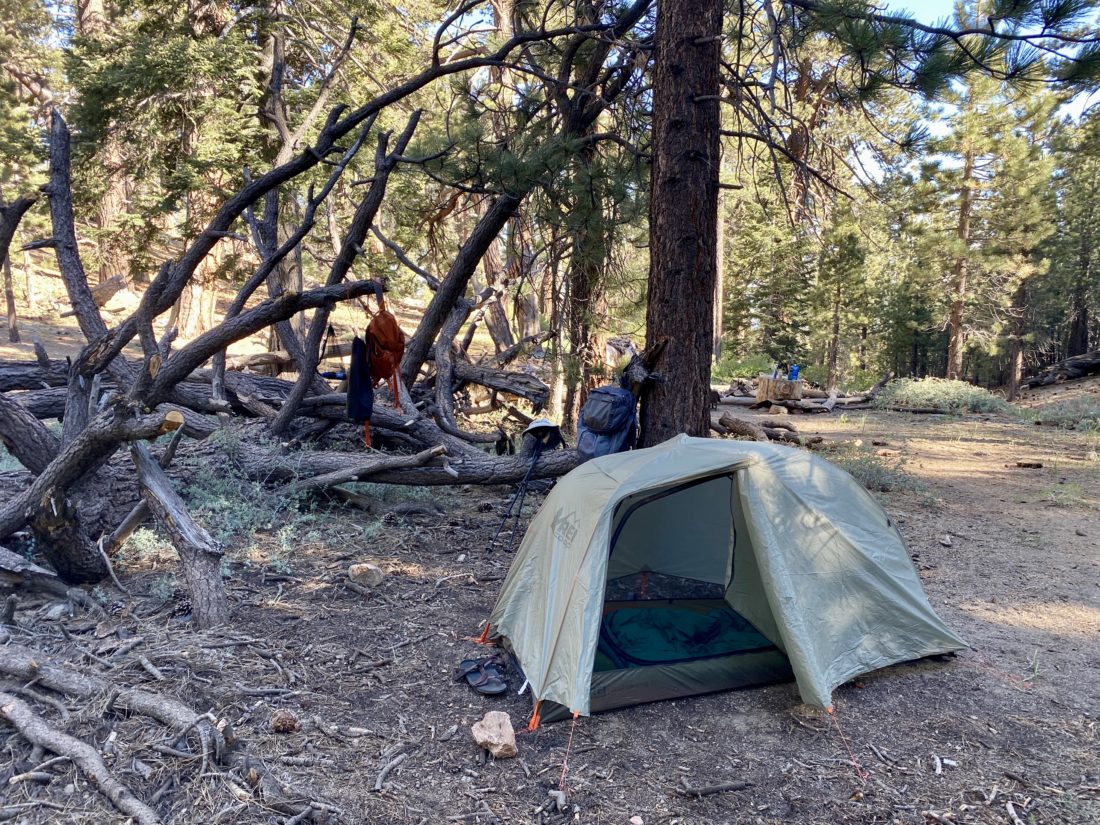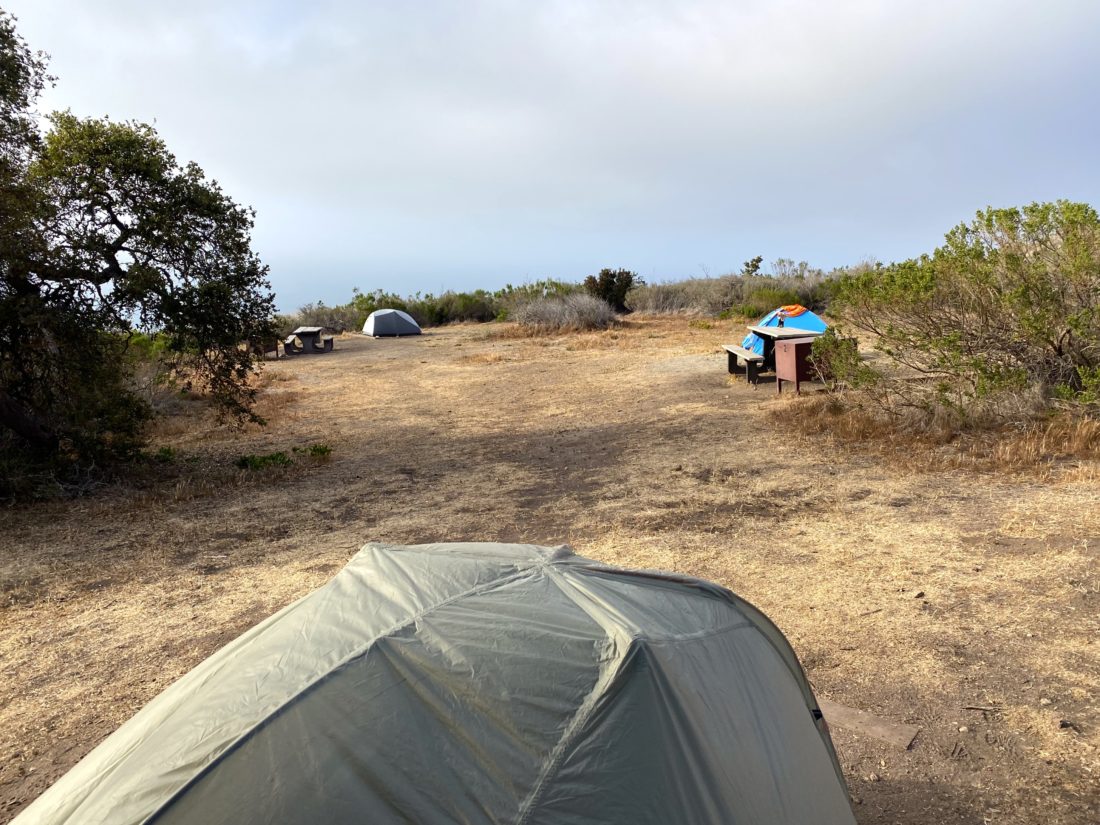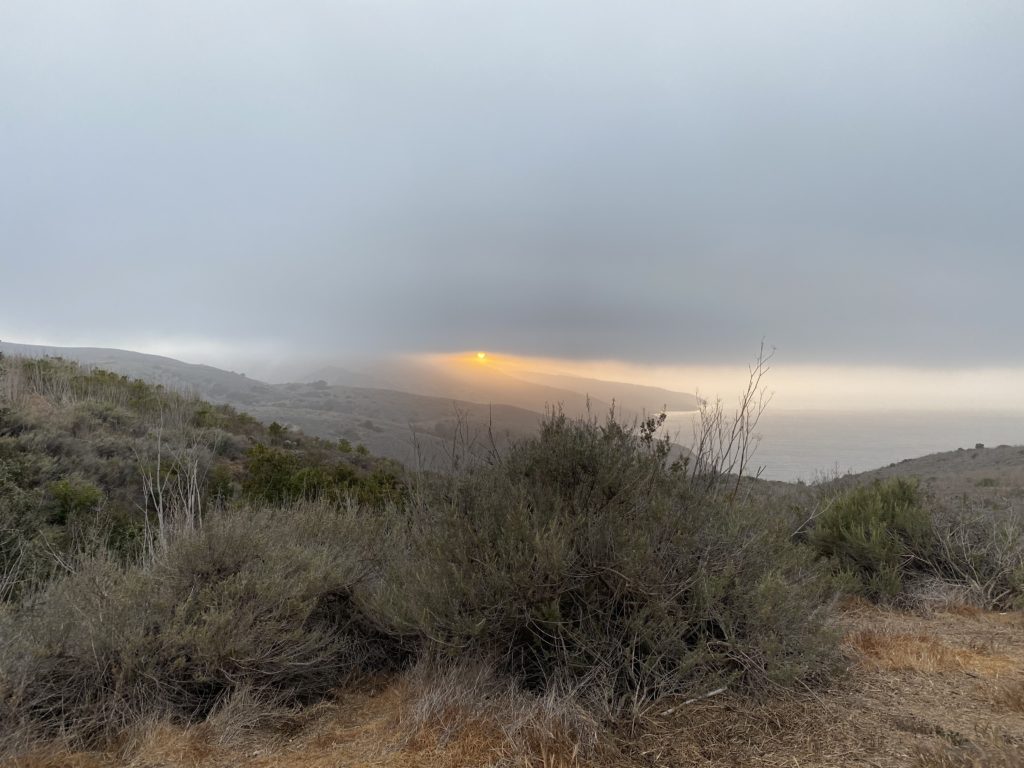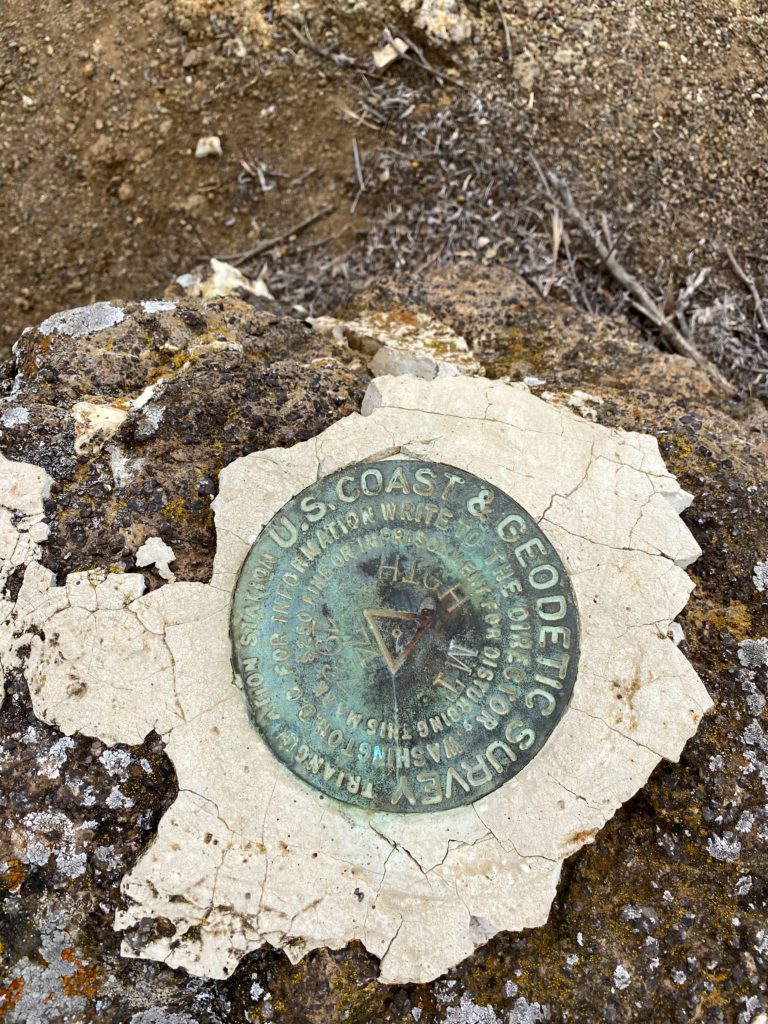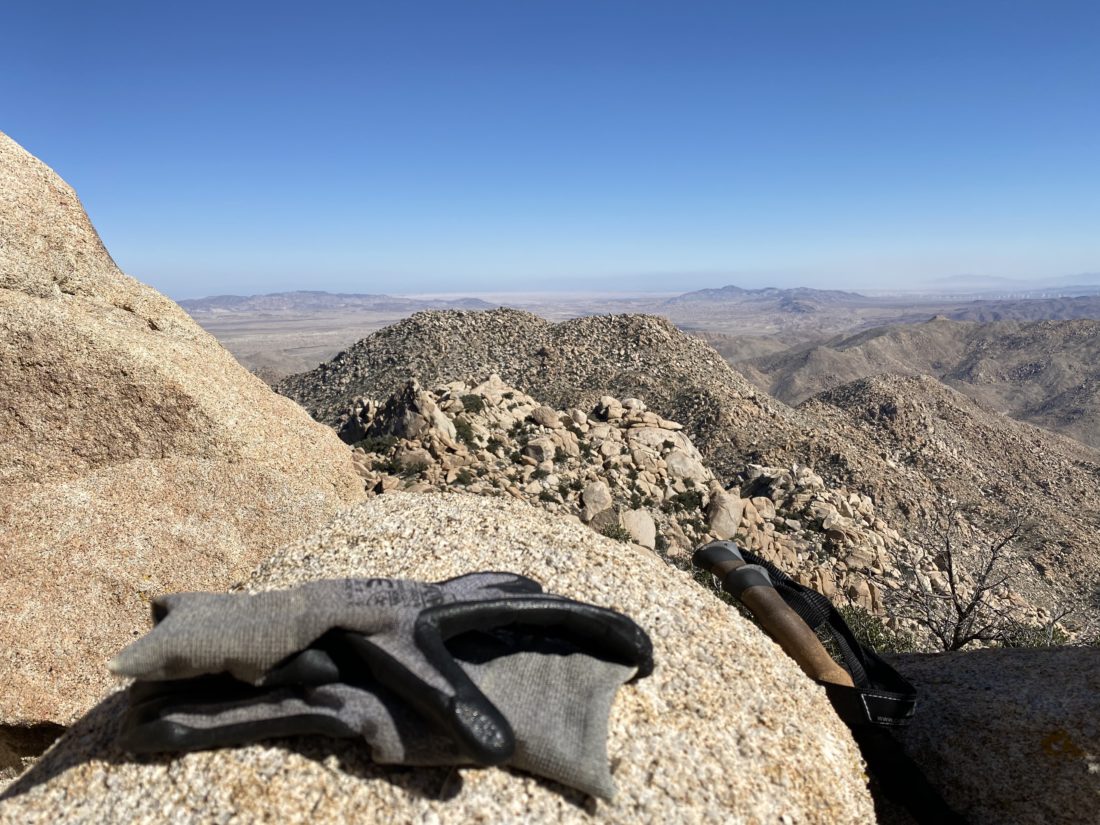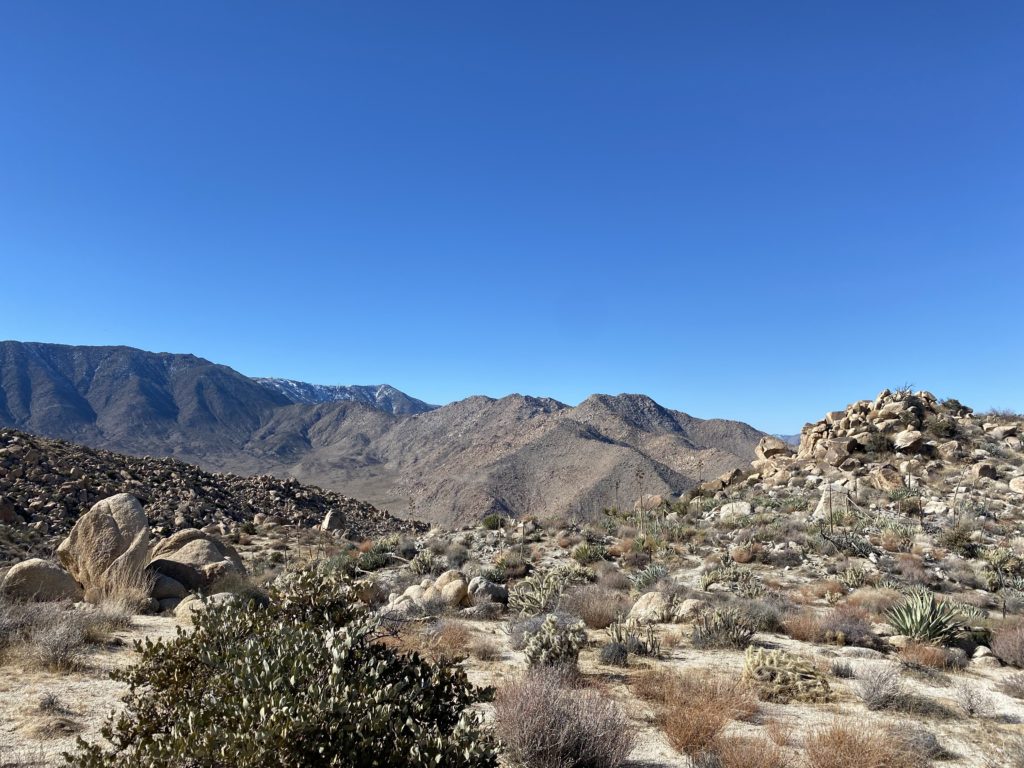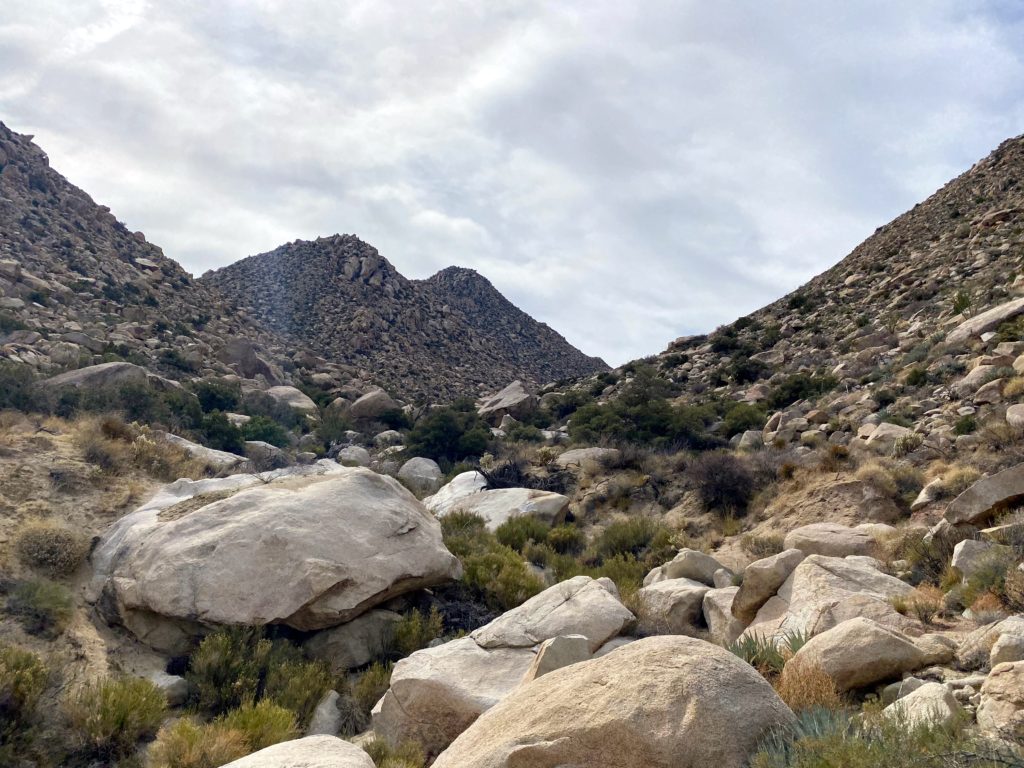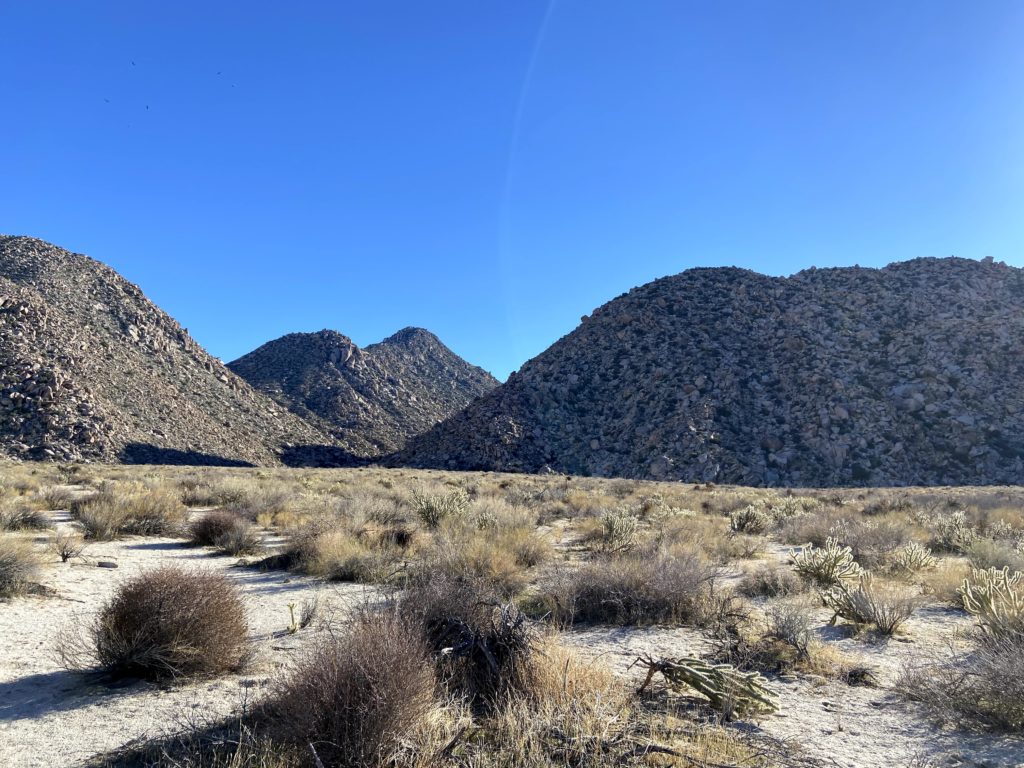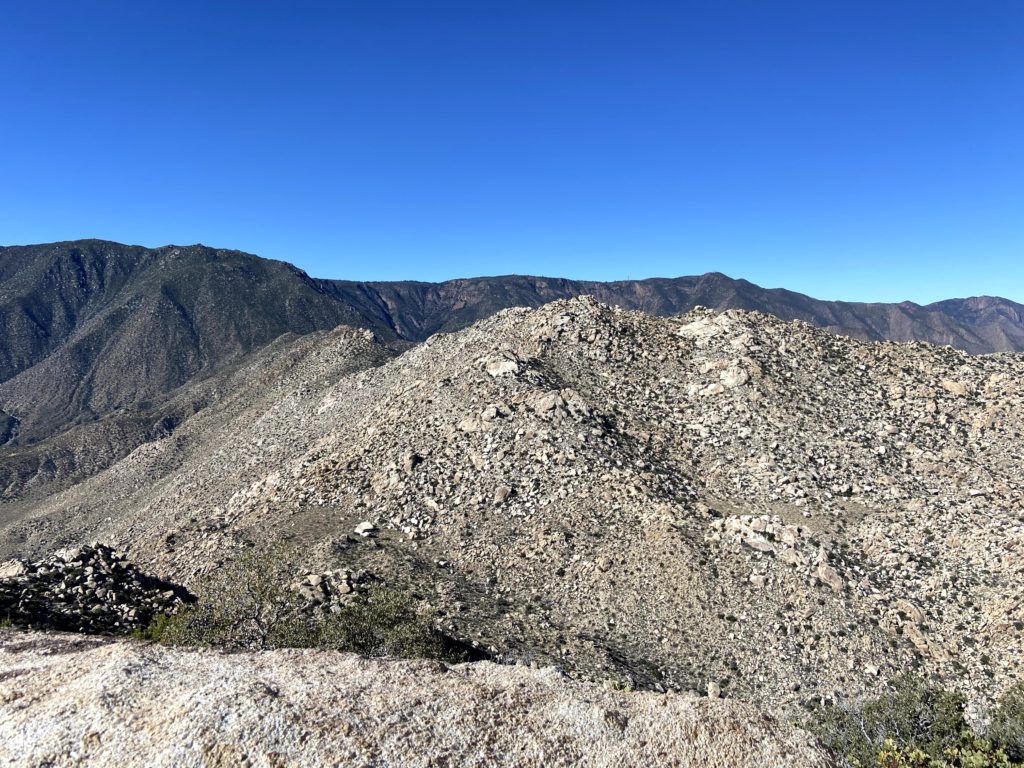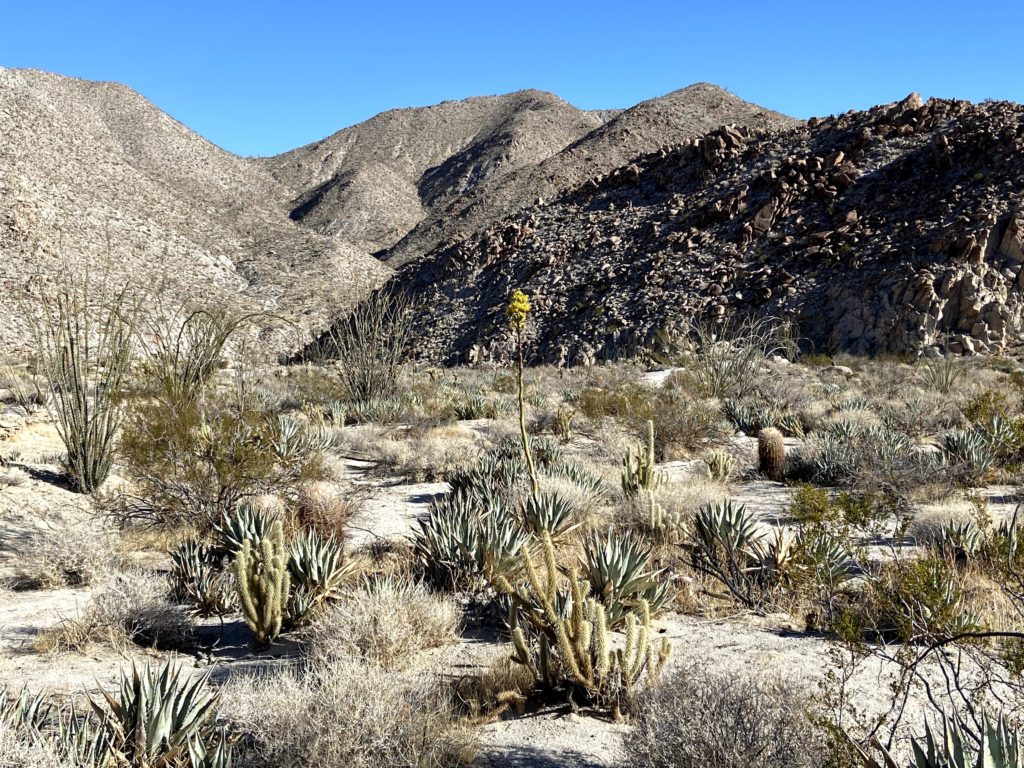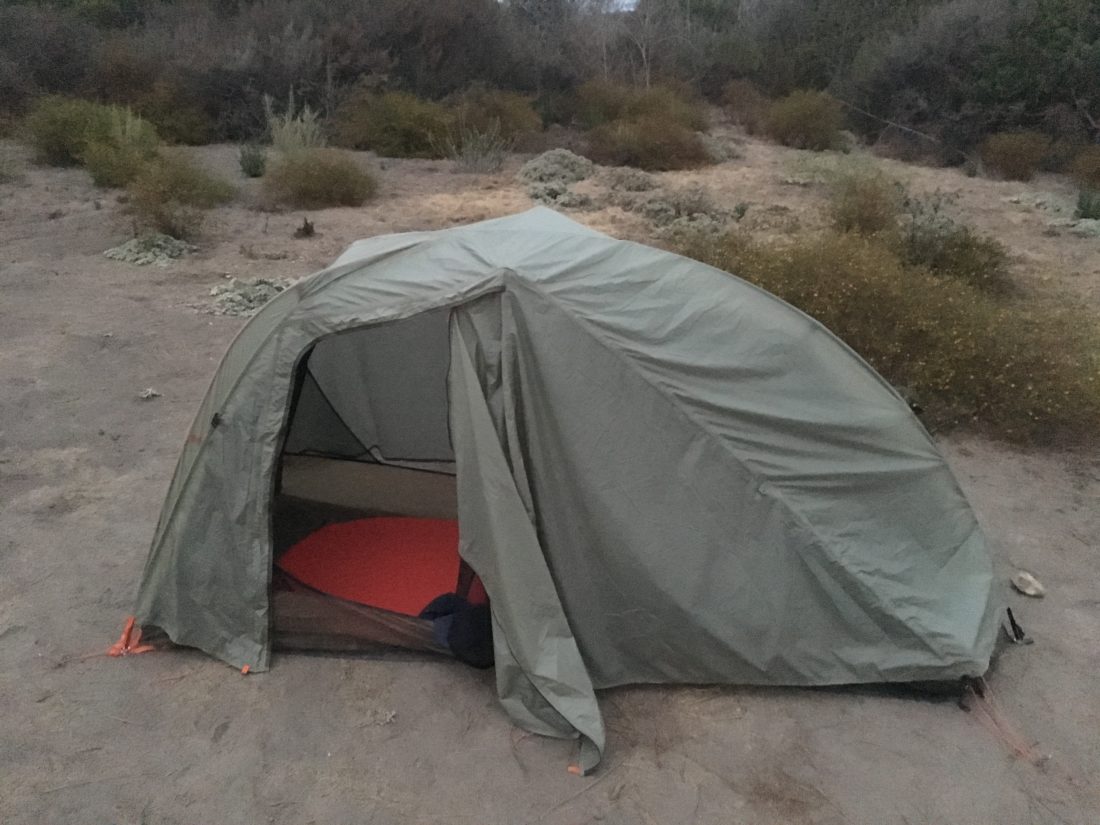For those who have done the 3-2-1 Challenge in Los Padres National Forest, you know that one of the real challenges is just the long drive to the trailhead. Last year when Ted Markus and I did these peaks, we did it as a day hike. During the long drive back to San Diego, we both commented that while the hike itself was great, sitting in LA traffic, not so much. Since we had both acquired backpacks and related overnight gear, we decided to do this trip as an overnight adventure.
Last year I logged that the entire hike was just under 11 miles, including a side trip to Sawmill Mountain West, so we knew this trip would be quite manageable. In fact it is about 4.5 miles to the campsite, and we’d pass the first two peaks on the challenge; Mt. Pinos and Sawmill. I figured once we made camp, we could go to the summit of Grouse, about a mile away. Another goal of this trip was to test out a few new items before I embark on the Rae Lakes Loop in a few weeks. Primarily the bear canister and the water filter.
Ted and I left San Diego just after 8 am and began our drive up to the trailhead. Our first stop was the Subway in Castaic. While there is a spring at the campsite, we were cautious about the flow. One site labeled the flow as ‘a trickle’. Rather than risk needing to use our water for food, we planned our hike to avoid needing to do so. Also, instead of hauling out lunch to eat on the trail, we stopped at Mike’s Pizza Co in Frazier Park and split a nice medium-sized veggie pizza. Ted had also packed a couple of beers for later that evening, so I ran next door to the market and grabbed some as well.


About 30 minutes later, we were pulling the parking lot at the Chula Vista Trailhead (aka Nordic Base), and we quickly gathered our gear. I hung my Adventure Pass from the mirror and we were off. The temperatures were pleasant and the scent of the pines was a welcomed treat. I carried our dinner in the bear canister, along with 2 liters of water and one Gatorade. This fluid load is about what I am planning for Rae Lakes. While the actual pack will be heavier with more food and clothes for the trip, it should give me some insight to what I have in store.









The trail, actually a closed dirt road, led us to the top of Mt. Pinos. In just over 1.5 miles, we gained about 500 feet. Once at the summit, we snapped a few photos of the survey marks and the southern San Joaquin Valley. Neither one of us felt the need for a real break yet, so we continued on. The nice road ended at the Mt. Pinos Condor Observation Site. There are some nice benches here but we still felt fine, so instead of stopping we headed down the Tumamelt Trail. This hike is a bit of a roller coaster, up to one summit, down to a saddle, then up to the next, and once again for good measure. I remember needing to stop last time when I was ascending this section. I was interested to see how I would do on this section the next day. For now, we just worked our way down the switchbacks.



Once at the saddle, we began to regain those 500 feet we just lost. I took a couple of short breathers under some refreshing shade, but overall everything was still feeling good. The summit of Sawmill sits off to the side of the main trail, about .2 miles away. We soon found ourselves before the massively stacked cairn and the curiously misspelled sign. I have seen incorrect elevations before, but not a misspelling on a simple word like Sawmill.




We dropped our packs and took a short rest. I had some Gatorade and some trail mix. After about 10 minutes, we put our packs back on for the descent down to Sheep Camp. At about 4.6 miles, we came to the junction of Tumamelt and the North Fork Trail. The campsite is about ½ mile down the North Fork Trail. As we neared it, we could hear the voices of other campers. Since this was a first-come, first-served site, I was hoping that we would find a spot. Thankfully, site #2 was open and we would not be looking to find an alternate site for the evening. I dropped my pack and walked the 50 yards or so to inspect the state of the spring. It had a nice steady trickle. I could see if you needed water for a group of Boy Scouts, you could wait a while. But for what we needed, this would be fine.


With our tents set up, we grabbed our slack packs and set off to finish the 3-2-1 Challenge by climbing up Grouse Mountain. Ted brought a simple waist pack, while I was testing yet another new item, the REI Flash 22 pack. We made our way back up to the junction and then continued on about .3 miles until the junction that would take us up to the summit. In keeping with the spirit of the day, we had another roller-coaster profile before we would reach ‘False’ Grouse. The well-defined trail ends at what appears to be the summit. There is even a small rock cairn. But in reality, the true summit is back along the crestline. There is where you will find the wooden structure that you probably have seen before. We snapped our photos and headed back to camp. Ted was hoping we might have a nice view to capture a sunset, but this wasn’t going to happen on this peak.



Back at camp, I went to the spring to filter some water for the evening and to have on hand since we were planning to enjoy a small campfire. As the sun slowly sank behind the hill, we broke out our sandwiches and beers. Soon evening fell and we began to enjoy the night sky. It was a new moon, so the stars were out in force. Ted was able to capture some pretty good shots.





I awoke just before sunrise, having an average night of sleep. Since we were just about 4.5 miles from the trailhead, we decided to wait on a real breakfast until we were back in town. I fired up the Jetboil for my coffee and Ted’s tea. As we sipped our beverages, we each munched on a bar, before packing up. We quietly left the campsite and began hiking out. I had a small blister on my pinky toe, but the KT tape seemed to be doing its job.




The final test for me was going to be that final climb up to the Condor Viewing area. Unlike last time, where I needed to take a few breaks, this time I was able to motor up with no real issues. It was here we finally started to encounter some hikers starting their day. I was wondering when we would. I had figured once we reached Mt. Pinos is where we would spot our first-day hikers.




Ted and I just continued on, thinking of some fresh eggs and toast… Soon we were back at the car, covering the 4.25 miles in just over 2 hours. We threw our packs in the car and changed into some clean shirts and drove back down the hill. Unfortunately, the restaurant I picked had some of the slowest service I had ever had. Not a lot of options in the area, so we just sucked it up and waited for our meals. But overall, the trip was great! Doing this trip as an overnight is the best way to do these peaks. Now to devote all my focus on getting ready for my big Rae Lakes trip!

I am an avid peak bagger, sometimes backpacker, and former sea kayaker living in San Diego. In 2019, I became the third person to complete the San Diego 100 Peak Challenge. Not stopping with that accomplishment, I set my sights on the harder San Diego Sierra Club 100 Peak list, which I completed in 2021. In addition, I have conquered several Six-Pack of Peaks challenges (SoCal, San Diego, Central Coast, and Arizona-Winter). Beyond attempting the San Diego Sierra Club 100 Peak list a second time, I am looking forward to exploring new summits and new adventures across the southwest.
